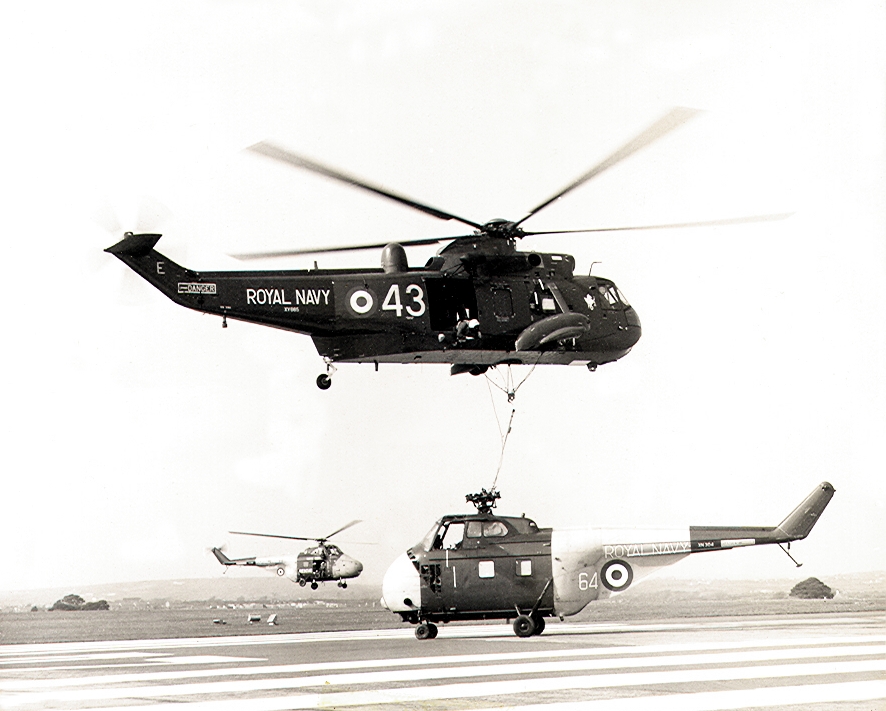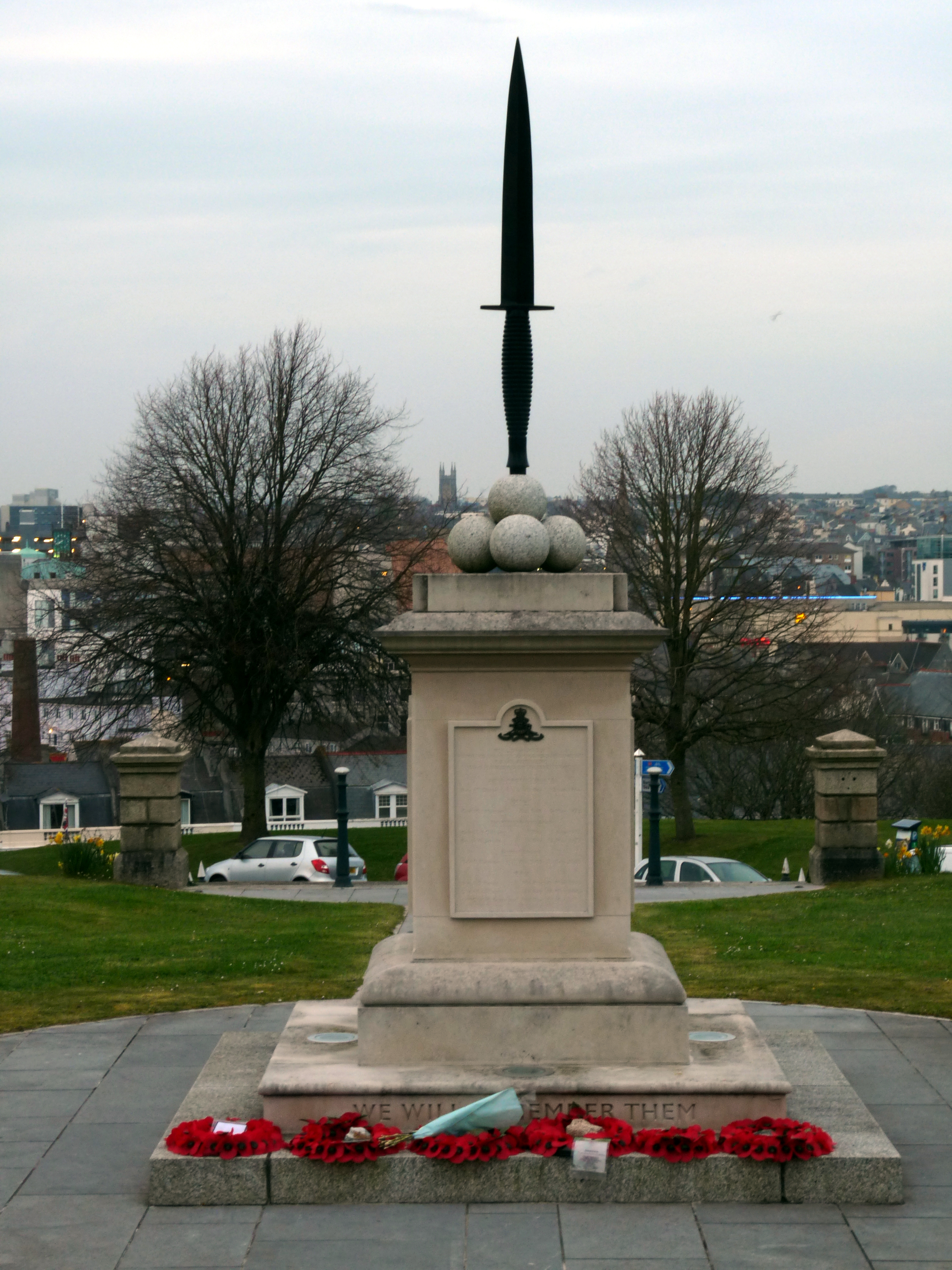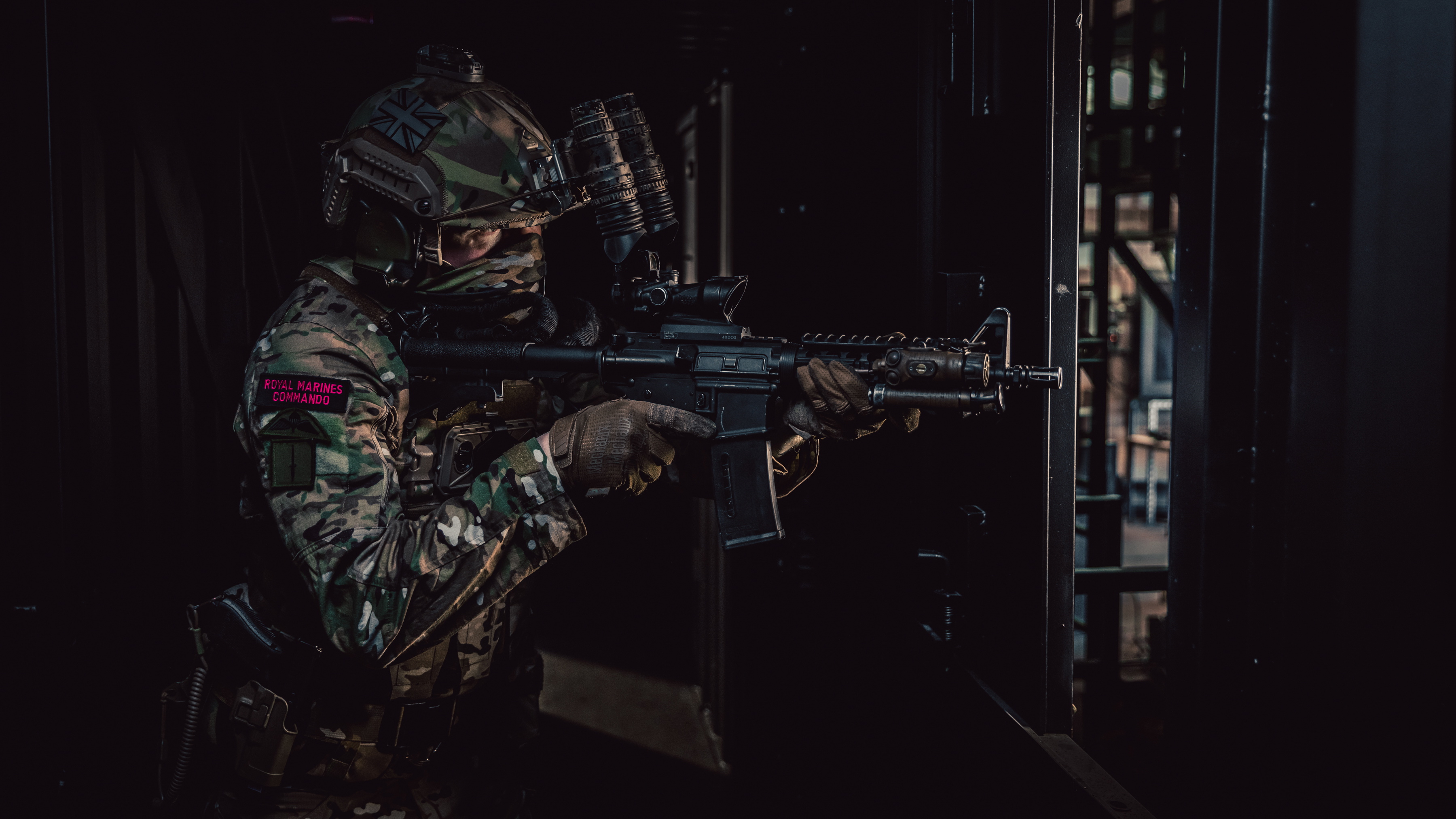|
Commander United Kingdom Maritime Forces
Commander United Kingdom Strike Force (COMUKSTRKFOR or CSF) and Rear Admiral Surface Ships (RASS) is a senior post in the Royal Navy. The post is the highest seagoing command in the Royal Navy. Its role is to direct UK, Allied or Coalition maritime forces anywhere in the world.Commander UK Maritime Forces Personnel within the command are always at short notice to deploy either at sea or on land, providing forces necessary for the task in hand. The Commander United Kingdom Strike Force may also be in command at sea of UK or NATO naval task forces and task groups formed for specific operations. Organisation within the Royal Navy The position reports to the |
Mike Utley (Royal Navy Officer)
Vice Admiral Michael Keith Utley, is a senior Royal Navy officer who currently serves as Commander Allied Maritime Command, NATO, since January 2023. Naval career Educated at Cowbridge School, Utley joined the Royal Navy in October 1990. He became the commanding officer of the patrol ship in 1995, of the patrol ship in 2003, and of the patrol ship in 2004, before becoming commanding officer of the frigate in 2006, with promotion to commander on 30 June 2006. He went on to become Commander Sea Training in 2010, before being appointed the last commanding officer of the aircraft carrier in May 2013 and in that role was deployed to provide humanitarian aid in the wake of Typhoon Haiyan in the Philippines in November 2013. Utley became commander of Standing NATO Maritime Group 2 in June 2017, Commander United Kingdom Carrier Strike Group in October 2018, and Commander United Kingdom Strike Force in December 2019. He was promoted to vice-admiral on 13 January 2023, and ass ... [...More Info...] [...Related Items...] OR: [Wikipedia] [Google] [Baidu] |
Strategic Defence And Security Review 2010
The Strategic Defence and Security Review 2010 was announced by the newly formed Conservative-Liberal Democrat coalition government of the United Kingdom in May 2010, and published on 19 October 2010. The previous major review of UK defence strategy was the Strategic Defence Review, published in 1998, and updated in 2003 by the '' Delivering Security in a Changing World'' white paper. As well as wanting an updated security policy, both the Conservatives and Liberal Democrats wanted the £38 billion overspend in the Ministry of Defence (MoD) procurement budget addressed. With the government committed to reducing the national budget deficit, the Treasury asked the MoD to draw up options for a 10–20% real-terms cut in its budget. The final amount was a 7.7% reduction over four years. Formation Summary All three of Britain's armed forces would take cuts in manpower. Overall, the largest overseas deployment was expected to be not more than 30,000 personnel, including mar ... [...More Info...] [...Related Items...] OR: [Wikipedia] [Google] [Baidu] |
Westland Sea King
The Westland WS-61 Sea King is a British licence-built version of the American Sikorsky S-61 helicopter of the same name, built by Westland Helicopters. The aircraft differs considerably from the American version, with Rolls-Royce Gnome engines (derived from the US General Electric T58), British-made anti-submarine warfare systems and a fully computerised flight control system. The Sea King was primarily designed for performing anti-submarine warfare (ASW) missions. A Sea King variant known as the Commando was devised by Westland to serve as a troop transport. In British service, the Westland Sea King provided a wide range of services in both the Royal Navy and the Royal Air Force. As well as wartime roles in the Falklands War, the Gulf War, the Bosnian War, the Iraq War and the Afghanistan War, the Sea King is perhaps most well known in its capacity as a Royal Navy Search and Rescue (red and grey livery) and RAF Search and Rescue Force (yellow livery) helicopter. The S ... [...More Info...] [...Related Items...] OR: [Wikipedia] [Google] [Baidu] |
RNAS Culdrose (HMS Seahawk)
Royal Naval Air Station Culdrose (RNAS Culdrose, also known as HMS ''Seahawk''; ICAO: EGDR) is a Royal Navy airbase near Helston on the Lizard Peninsula of Cornwall UK, and is one of the largest helicopter bases in Europe. Its main role is serving the Fleet Air Arm's front line AgustaWestland Merlin helicopter squadrons. History 1940–1999 Admiralty surveyors first started preliminary surveys of land near Helston in 1942. RNAS ''Culdrose'' was built by John Laing & Son and commissioned as HMS ''Seahawk'' five years after these initial surveys. The station was originally designed to be a wartime airfield lasting about ten years. The initial plans were for ''Culdrose'' to serve as a Naval Fighting School, it soon developed other roles. These varied roles included such things as the trials of the Navy's first jets, training of airborne early warning crews and as a home base for carrier-based aircraft. Over the years the station's emphasis changed from fixed wing aircraft to ... [...More Info...] [...Related Items...] OR: [Wikipedia] [Google] [Baidu] |
539 Assault Squadron RM
539 Raiding Squadron (539 RS) is 3 Commando Brigade's integral operational amphibious movement capability, delivering them on to land from water and patrolling waterways. It forms part of 47 Commando (Raiding Group) Royal Marines. The Squadron are based in the new Royal Marines Tamar complex at the northern end of HMNB Devonport. History 539 ASRM was formed on 2 April 1984 and commissioned as operational on 24 July 1984. This was in direct response to lessons learned during the Falklands Conflict in 1982. More recent operations include Operation Telic. 539 ASRM supported 3 Commando Brigade as it took the Al-Faw Peninsula, carrying out numerous operations such as several landings and the clearing of various waterways. 539 ASRM continued to operate in Iraq, performing security patrols of Iraq's southern ports and water networks until the end of Operation Telic. In July 2011 a landing craft from RFA ''Cardigan Bay'' landed two Vikings and Royal Marines of 539 Assault Squadron ... [...More Info...] [...Related Items...] OR: [Wikipedia] [Google] [Baidu] |
29th Commando Regiment Royal Artillery
29 Commando Regiment, Royal Artillery is the Commando-trained unit of the British Army's Royal Artillery, based in Plymouth. The regiment is under the operational control of 3 Commando Brigade, to which it provides artillery support and gunnery observation. History The regiment was established in 1947 by the redesignation of the 25th Field Regiment.J.B.M. Frederick, ''Lineage Book of British Land Forces 1660–1978'', Vol II, Wakefield: Microform Academic, 1984, ISBN 1-85117-009-X, p. 947. In 1951, it was renamed as the 29th Medium Regiment Royal Artillery and was based at Brancepeth Camp in Durham. In 1957, it was deployed to Cyprus on internal security duties, and spent three years at Karlaos Camp, near Famagusta. By now it had reverted to a field regiment, at one point loaning its 25-pounder field guns to another regiment that was hurriedly deployed with a United Nations force to Lebanon and Jordan. In late 1960 the regiment exchanged with 42 Field Regiment and on return to ... [...More Info...] [...Related Items...] OR: [Wikipedia] [Google] [Baidu] |
59 Commando
24 Commando Royal Engineers is a unit of the British Army's Royal Engineers supporting 3 Commando Brigade. History The regiment, which was formed in April 2008, is one of two British Army units attached to 3 Commando Brigade, Royal Marines, the other being 29 Commando Regiment Royal Artillery. It was announced on 4 July 2012 that 24 Commando Engineer Regiment was to disband under Army 2020. Members of the unit were to be dispersed to other British Army units and 59 Independent Commando Squadron would be re-formed to replace it. In a contrasting written statement on 10 April 2014, the Minister for Defence Mark Francois, stated that this withdrawal would not take place. The unit was to be retained but reduced in size. In August 2014 it was agreed that 131 Commando Squadron Royal Engineers, 131 Independent Squadron would re-subordinate from 3 Commando Brigade to become part of 24 Commando Royal Engineers. This change took place on 2 October 2015, making the regiment a hybrid Regul ... [...More Info...] [...Related Items...] OR: [Wikipedia] [Google] [Baidu] |
40 Commando
40 Commando RM is a battalion-sized formation of the British Royal Marines and subordinate unit within 3 Commando Brigade, the principal Commando formation, under the Operational Command of Commander in Chief Fleet. Their barracks are at Norton Manor Camp, Norton Fitzwarren near Taunton in Somerset. Tasked as a Commando light infantry unit, 40 Commando (pronounced "Forty Commando") is capable of a wide range of operational tasks. Personnel regularly deploy outside the United Kingdom on operations or training. Whilst 3 Commando Brigade RM are the principal cold weather warfare formation, personnel are capable of operating in a variety of theatres including tropical jungle, desert or mountainous terrain. The Commando is a regular participant in the annual Brigade cold weather warfare exercise in Norway. The unit's first "winter" was 1991, until which the unit was nicknamed the "Sunshine Commando". All personnel will have completed the Commando course at the Commando Training Cent ... [...More Info...] [...Related Items...] OR: [Wikipedia] [Google] [Baidu] |
Indian Navy
The Indian Navy is the maritime branch of the Indian Armed Forces. The President of India is the Supreme Commander of the Indian Navy. The Chief of Naval Staff, a four-star admiral, commands the navy. As a blue-water navy, it operates significantly in the Persian Gulf Region, the Horn of Africa, the Strait of Malacca, and routinely conducts anti-piracy operations and partners with other navies in the region. It also conducts routine two to three month-long deployments in the South and East China seas as well as the western Mediterranean sea simultaneously. The primary objective of the navy is to safeguard the nation's maritime borders, and in conjunction with other Armed Forces of the union, act to deter or defeat any threats or aggression against the territory, people or maritime interests of India, both in war and peace. Through joint exercises, goodwill visits and humanitarian missions, including disaster relief, the Indian Navy promotes bilateral relations between n ... [...More Info...] [...Related Items...] OR: [Wikipedia] [Google] [Baidu] |
Future Commando Force
The Future Commando Force (FCF) is an in-progress (as of February 2022) modernisation programme and model of the future role and operations of the Royal Marines. The FCF essentially retasks 40 Commando and 45 Commando with implementing the infantry component of two Littoral Response Groups (LRGs), though other units from 3 Commando Brigade are also included in the composition of LRGs, as well as changing the role and operations of the Royal Marines and the equipment and tactics they use. The FCF concept was created before 2019, when the first exercises and experiments with the FCF began. It was reinforced in the Defence in a Competitive Age command paper, which followed the Integrated Review. It describes the Royal Marines as a forward-deployed maritime special operations/special operations capable force which will work with greater agility and autonomy, and in smaller teams that specialise in raids within littoral zones, and operations within grey zones and other special operatio ... [...More Info...] [...Related Items...] OR: [Wikipedia] [Google] [Baidu] |
Royal Marines
The Corps of Royal Marines (RM), also known as the Royal Marines Commandos, are the UK's special operations capable commando force, amphibious light infantry and also one of the five fighting arms of the Royal Navy. The Corps of Royal Marines can trace their origins back to the formation of the "Duke of York and Albany's maritime regiment of Foot" on 28 October 1664, and can trace their commando origins to the formation of the 3rd Special Service Brigade, now known as 3 Commando Brigade on 14 February 1942, during the Second World War. As a specialised and adaptable light infantry and commando force, Royal Marine Commandos are trained for rapid deployment worldwide and capable of dealing with a wide range of threats. The Corps of Royal Marines is organised into 3 Commando Brigade and a number of separate units, including 47 Commando (Raiding Group) Royal Marines, and a company-strength commitment to the Special Forces Support Group. The Corps operates in all environments an ... [...More Info...] [...Related Items...] OR: [Wikipedia] [Google] [Baidu] |
Commandant General Royal Marines
The Commandant General Royal Marines is the professional head of the Royal Marines. The title has existed since 1943. The role is held by a General who is assisted by a Deputy Commandant General, with the rank of brigadier. This position is not to be confused with Captain General Royal Marines, the ceremonial head. The Commandant General Royal Marines is the counterpart to the Commandant of the United States Marine Corps. History In 1760 three naval captains were appointed colonels of marines. However, these were naval officers and it meant that the furthest a marine officer could advance was to lieutenant colonel. It was not until 1771 that commandants of the three divisions (Portsmouth, Plymouth and Chatham) were appointed. The first single professional head of the Royal Marine Forces was the Deputy Adjutant-General, a post which existed from 1825 until 1914 when the post was re-designated the Adjutant-General: the post holder usually held the rank of full general. Since 1943 ... [...More Info...] [...Related Items...] OR: [Wikipedia] [Google] [Baidu] |





